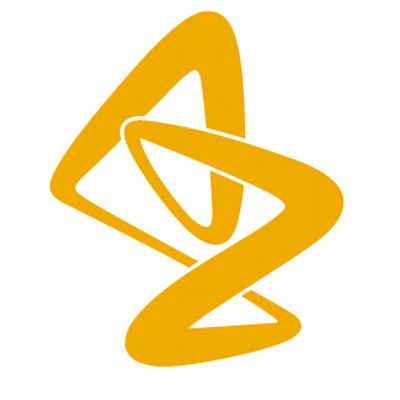Request Demo
Last update 08 May 2025
toxB
Last update 08 May 2025
Basic Info
Synonyms toxB, Toxin B |
Introduction Precursor of a cytotoxin that targets and disrupts the colonic epithelium, inducing the host inflammatory and innate immune responses and resulting in diarrhea and pseudomembranous colitis (PubMed:20844489, PubMed:24919149). TcdB constitutes the main toxin that mediates the pathology of C.difficile infection, an opportunistic pathogen that colonizes the colon when the normal gut microbiome is disrupted (PubMed:19252482, PubMed:20844489). Compared to TcdA, TcdB is more virulent and more important for inducing the host inflammatory and innate immune responses (PubMed:19252482, PubMed:24919149). This form constitutes the precursor of the toxin: it enters into host cells and mediates autoprocessing to release the active toxin (Glucosyltransferase TcdB) into the host cytosol (PubMed:10768933, PubMed:11152463, PubMed:12941936, PubMed:17334356, PubMed:20498856). Targets colonic epithelia by binding to the frizzled receptors FZD1, FZD2 and FZD7, and enters host cells via clathrin-mediated endocytosis (PubMed:27680706). Frizzled receptors constitute the major host receptors in the colonic epithelium, but other receptors, such as CSPG4 or NECTIN3/PVRL3, have been identified (PubMed:25547119, PubMed:26038560, PubMed:27680706). Binding to carbohydrates and sulfated glycosaminoglycans on host cell surface also contribute to entry into cells (By similarity). Once entered into host cells, acidification in the endosome promotes the membrane insertion of the translocation region and formation of a pore, leading to translocation of the GT44 and peptidase C80 domains across the endosomal membrane (PubMed:11152463, PubMed:12941936, PubMed:24567384). This activates the peptidase C80 domain and autocatalytic processing, releasing the N-terminal part (Glucosyltransferase TcdB), which constitutes the active part of the toxin, in the cytosol (PubMed:17334356, PubMed:27571750).
Active form of the toxin, which is released into the host cytosol following autoprocessing and inactivates small GTPases (PubMed:16157585, PubMed:17901056, PubMed:24905543, PubMed:24919149, PubMed:7777059, PubMed:8144660). Acts by mediating monoglucosylation of small GTPases of the Rho family (Rac1, RhoA, RhoB, RhoC, RhoG and Cdc42) in host cells at the conserved threonine residue located in the switch I region ('Thr-37/35'), using UDP-alpha-D-glucose as the sugar donor (PubMed:16157585, PubMed:17901056, PubMed:24905543, PubMed:24919149, PubMed:7777059). Monoglucosylation of host small GTPases completely prevents the recognition of the downstream effector, blocking the GTPases in their inactive form, leading to actin cytoskeleton disruption and cell death, resulting in the loss of colonic epithelial barrier function (PubMed:24919149, PubMed:7777059). |
Related
17
Drugs associated with toxBTarget |
Mechanism toxB inhibitors |
Active Org. |
Originator Org. |
Active Indication |
Inactive Indication- |
Drug Highest PhaseApproved |
First Approval Ctry. / Loc. United States |
First Approval Date21 Oct 2016 |
Target |
Mechanism TcdA inhibitors [+1] |
Active Org. |
Originator Org. |
Active Indication |
Inactive Indication |
Drug Highest PhasePhase 3 |
First Approval Ctry. / Loc.- |
First Approval Date20 Jan 1800 |
Target |
Mechanism toxB inhibitors |
Active Org. |
Originator Org. |
Active Indication |
Inactive Indication- |
Drug Highest PhasePhase 2/3 |
First Approval Ctry. / Loc.- |
First Approval Date20 Jan 1800 |
43
Clinical Trials associated with toxBNCT06639997
A Phase I Double-blind, Placebo-controlled Study to Evaluate the Safety, Tolerability and Pharmacokinetics of AZD5148 in Healthy Japanese Adults
The purpose of this study is to measure safety, tolerability and PK of a single dose of AZD5148 administered via IV bolus or IM injection in healthy Japanese participants.
Start Date31 Oct 2024 |
Sponsor / Collaborator |
NCT06536465
A Phase 2 Clinical Study of REC-3964 in Adults for the Reduction of Recurrent Clostridioides Difficile Infection (CDI)
This is a multi-center, open-label study to investigate the safety, tolerability, pharmacokinetics (PK) and efficacy of RE-3964 (doses of either 250 mg or 500 mg PO every 12 hours) for the reduction of Clostridioides Difficile infection (CDI)."
Start Date14 Oct 2024 |
Sponsor / Collaborator |
NCT05330182
A Phase 2, Randomized, Double-blind, Placebo-controlled Study of LMN-201 for Prevention of C. Difficile Infection Recurrence
This is a multisite study to evaluate the safety, tolerability, and efficacy of LMN-201 in participants recently diagnosed with CDI who are scheduled to receive or are receiving SOC antibiotic therapy against C. difficile.
Start Date29 Aug 2024 |
Sponsor / Collaborator |
100 Clinical Results associated with toxB
Login to view more data
100 Translational Medicine associated with toxB
Login to view more data
0 Patents (Medical) associated with toxB
Login to view more data
836
Literatures (Medical) associated with toxB01 Apr 2025·American Journal of Gastroenterology
When and What to Test for Diarrhea: Focus on Stool Testing
Review
Author: Camilleri, Michael
01 Mar 2025·Journal of Trauma and Acute Care Surgery
The always evolving diagnosis and management of Clostridioides difficile colitis: What you need to know
Review
Author: Guo, Weidun Alan ; L'Huillier, Joseph C. ; L'Huillier, Joseph C
01 Mar 2025·Revista Argentina de Microbiología
Impacto de los marcadores microbiológicos en la evolución de la infección por Clostridioides difficile
Article
Author: Serrano-Sánchez, José ; Marín-Arriaza, Mercedes ; Márquez-Gómez, Ignacio ; García-Barrionuevo, Aurora ; Mediavilla-Gradolph, Concepción ; Halbardier-Carretero, Alexandra ; Caballero-Martínez, Luis Francisco ; Ruiz-Mesa, Juan Diego ; Toro-Peinado, Inmaculada de ; Palop-Borrás, Begoña ; Rojo-Martín, María Dolores
3
News (Medical) associated with toxB17 Jan 2023
MELBOURNE, Australia, Jan. 17, 2023 (GLOBE NEWSWIRE) -- Immuron Limited (ASX: IMC; NASDAQ: IMRN), an Australian based and globally integrated biopharmaceutical company that has developed two commercially available oral immunotherapeutic products for the treatment of gut mediated diseases, is pleased to announce that has been granted a European Patent for compositions and methods for the treatment and/or prophylaxis of Clostridioides difficile associated disease.
Notification of the decision to grant European Patent 14784945.9, entitled “Methods and Compositions for the treatment and/or prophylaxis of Clostridium difficile associated disease,” was formally received yesterday, and grant of this application will be published in the European Patent Bulletin on 25 January 2023 under European Patent No. 2986316. The company previously reported it had received notification from the European Patent Office of the intent to grant in July last year (ASX announcement July 7, 2022).
The European registration adds to Immuron's patent position for compositions and methods for the treatment and/or prophylaxis of Clostridioides difficile associated disease in Australia, New Zealand and the United States.
Clostridioides difficile (previously known as Clostridium difficile) infection (CDI) is a disease of the large intestine caused by toxins produced by the spore forming bacterium Clostridioides difficile. CDI can also result in serious disease complications including bowel perforation, toxic megacolon and sepsis, and it can prove fatal in the most severe cases. In recent years, increases in the frequency and severity of CDI have been observed worldwide, as well as an increased risk of community-associated CDI, and CDI in persons previously thought to be low risk. It is estimated that CDI affects up to 1.2% of hospitalized patients in the United States, representing an estimated cost of USD 4.8 billion per year (source: CDC). In Europe, the estimated cost is approximately 3 billion per year, which is likely to increase concomitantly with a more elderly society; more than 134 million Europeans will be >65 years by 2050.
This release has been authorised by the directors of Immuron Limited.
COMPANY CONTACT:
Steven Lydeamore
Chief Executive Officer
Ph: +61 (0)3 9824 5254
info@immuron.com
About Immuron
Immuron Limited (ASX: IMC, NASDAQ: IMRN), is an Australian biopharmaceutical company focused on developing and commercializing orally delivered targeted polyclonal antibodies for the treatment of infectious diseases.
About IMM-529
IMM-529 is a polyclonal antibody biological product intended to prevent and treat Clostridioides difficile(C.difficile) infections and has been developed to spare the gut microbiome from the effects of "classic" antibiotic treatments. The delivery of IMM-529 results in localized toxin B neutralization at the site of infection and prevents severe damage occurring to the gut while also binding to C.difficile spores and vegetative cells preventing further colonization. In addition, the antibodies in IMM-529 have demonstrated cross-reactions with a variety of human and animal C.difficile isolates and their associated Toxin B, vegetative cell and spore components. The antibodies in IMM-529 have also been shown to neutralize Toxin B from a historical C. difficile strain (630) and from a hypervirulent (HV) strain which caused a worldwide outbreak of the disease.
For more information visit:
ImmunotherapyPatent Expiration
08 Jun 2016
June 8, 2016
By
Mark Terry
, BioSpace.com Breaking News Staff
Early regulatory review of
Merck & Co.
‘s bezlotoxumab for diarrhea caused by
Clostridium difficile
(C. diff),
indicates
the review panel is questioning whether the drug actually works.
C. difficile
, typically referred to as
C. diff
, is a bacteria that inflames the colon, resulting in severe diarrhea that can be life threatening. It is a common cause of infectious diarrhea in hospitals and nursing homes. According to federal health data,
C. diff
is the most common microbial cause of health care-related infectious in the U.S.
A
U.S. Food and Drug Administration (FDA)
briefing document
starts with, “We would like the committee to discuss whether the data are adequate to support safety and efficacy of bezlotoxumab for the prevention of Clostridium difficile infection (CDI) recurrence.”
The drug is a fully human monoclonal IgG1/kappa antibody. It binds to one of the
C. difficile
toxins, which prevents it from binding to cells in the colon. This results in avoiding inflammation of the colon cells.
Trials have shown a decrease in
C. difficile
recurrent in patients treated with bezlotoxumab, but the FDA expressed concern whether the drug’s efficacy had actually been adequately demonstrated. As summed up by Reuters, “The review said results suggest the drug may ‘negatively affect’ the cure rate of an initial
C. difficile
episode.”
The drug was developed to neutralize toxin B found in
C. difficile
. If the drug is approved, it would be prescribed with antibiotics, which are the current standard treatment. There are otherwise no drugs to prevent recurrence on the market.
Bezlotoxumab was developed by
Medarex
, which was acquired by
Bristol-Myers Squibb
and then licensed to Merck in 2009.
The FDA briefing states, “While there appears to be a decrease in CDI recurrence with the use of bezlotoxumab, there is concern as to whether the efficacy of bezlotoxumab for the prevention of CDI recurrence has been adequately demonstrated. It was anticipated that the monoclonal antibody would have no impact on clinical cure of the initial CDI episode. However there were numerical differences observed in clinical cure between bezlotoxumab and placebo in both trials. In Study P001, the difference was in favor of placebo whereas the difference was in favor of bezlotoxumab in Study P002.”
According to Merck’s
briefing documents
, in 2011 there were approximately 29,000 deaths in the U.S. associated with CDI. The
Centers for Disease Control and Prevention (CDC)
have declared CDI an urgent public health threat.
The Merck files also indicate that the two trials, “demonstrated that the administration of a single IV 10mg/kg dose of bezlotoxumab is superior to placebo in prevention of CDI recurrence (primary endpoint) over a follow-up period of 12 weeks.”
A decision by the FDA is expected by July 23.
Drug Approval
06 Sep 2006
PRINCETON, N.J., and JAMAICA PLAIN, Mass., Sept. 6 /PRNewswire-FirstCall/ -- Medarex, Inc. (Nasdaq: MEDX - News) and The Massachusetts Biologic Laboratories (MBL) of the University of Massachusetts Medical School (UMMS) today announced the commencement of a randomized, double-blind, placebo-controlled Phase II clinical trial of CDA-1 (also referred to as MDX-066) and MDX-1388, two novel fully human monoclonal antibodies developed to Clostridium difficile (C. difficile) Toxin A and Toxin B, respectively, for the treatment of C. difficile associated diarrhea (CDAD).
The single-dose Phase II clinical trial is expected to enroll up to 200 patients with CDAD and is designed to assess the efficacy of the combination of CDA-1 and MDX-1388 against placebo as an addition to standard of care antibiotics to resolve CDAD more quickly and to prevent subsequent relapse of disease.
"CDAD is a growing and potentially serious epidemic, particularly in the twenty to fifty percent of hospitalized patients who relapse after receiving antibiotic treatment," said Donna Ambrosino, MD, Director of the MBL and a professor of pediatrics at UMMS. "We believe that the development of antibodies against the toxins could address this significant and costly public health problem."
A newly identified epidemic strain of C. difficile has been implicated in severe outbreaks of CDAD in the United States, Canada and the United Kingdom, and has affected otherwise healthy individuals in the community. The virulence of the new strain has been attributed, at least in part, to a markedly increased efficiency of production of Toxins A and B. The epidemic strain appears to cause more severe illness initially and to subsequently result in a higher rate of relapse. As previously announced, data presented at the 2005 Infectious Disease Society of America (IDSA) showed that the CDA-1 and MDX- 1388 antibodies effectively neutralized the toxins from the newly identified epidemic strain of C. difficile in a preclinical study.
Dr. Ambrosino noted, "We have conducted studies in a stringent animal model of acute CDAD that showed that the combination of both CDA-1 and MDX- 1388 increased survival when compared to either antibody alone, with an efficacy comparable to antibiotic treatment. Additionally, in an animal model to study the relapse of CDAD after withdrawal of antibiotics, the combination of the antibodies was highly effective in preventing relapse, and clearly superior to each antibody alone."
MBL and Medarex have now completed Phase I studies in healthy volunteers with CDA-1 and MDX-1388 alone and in combination, which demonstrated good tolerability and expected pharmacokinetic parameters. An ongoing Phase II study to examine the efficacy of CDA-1 alone against placebo in combination with standard of care in patients with CDAD has now been stopped early in favor of collecting clinical efficacy data on what is expected to be the more potent combination of CDA-1 and MDX-1388.
"We have seen very encouraging preclinical data indicating that the combination of the two antibodies is potentially more effective than either antibody alone in treating and preventing recurrence of CDAD," said Dr. Israel Lowy, Medarex's Senior Director of Clinical Science and Infectious Disease. "Now that we have Phase I data indicating the safety of MDX-1388 and its combination with CDA-1, we are taking the earliest opportunity to start a Phase II trial with the combination which was so clearly most effective in pre-clinical efficacy studies in CDAD."
About CDA-1 (MDX-066) and MDX-1388
CDA-1 (MDX-066) and MDX-1388 are novel, fully human antibodies that were developed by MBL and Medarex to target and neutralize the effects of Toxin A and Toxin B, respectively, the toxins produced by the bacterium Clostridium difficile (C. difficile) and which are associated with a serious and sometimes deadly form of diarrhea called C. difficile associated diarrhea (CDAD). Published epidemiologic studies of hospitalized patients at risk for CDAD have shown a positive correlation between detectable levels of antibody in the blood to toxin A and protection from disease or relapse.
Public health officials estimate that there are approximately 300,000 cases of CDAD among hospitalized patients each year in the United States with approximately two percent deaths. CDAD is typically treated with antibiotics; however, prolonged illness can occur, and between 20-25 percent of those affected by CDAD suffer a relapse of the disease.
About MBL
The Massachusetts Biologic Laboratories is the only non-profit FDA- licensed manufacturer of vaccines and other biologic products in the United States. The laboratory was established in 1894 and since then the MBL's mission has been to improve public health through applied research, development and production of biologic products. MBL has been a part of the UMass Medical School since 1997.
About UMass Medical School
The University of Massachusetts Medical School is one of the fastest growing academic health centers in the country and has built a reputation as a world-class research institution, consistently producing noteworthy advances in clinical and basic research. The Medical School attracts more than $174 million in extramural research funding annually. Research dollars enable UMMS scientists to explore human disease from the molecular level to large-scale clinical trials. Basic and clinical research has led to new approaches for diagnosis, treatment and prevention of disease. Visit for additional information.
About Medarex
Medarex is a biopharmaceutical company focused on the discovery, development and potential commercialization of fully human antibody-based therapeutics to treat life-threatening and debilitating diseases, including cancer, inflammation, autoimmune disorders and infectious diseases. Medarex applies its UltiMAb® technology and product development and clinical manufacturing experience to generate, support and potentially commercialize a broad range of fully human antibody product candidates for itself and its partners. Thirty-three of these therapeutic product candidates derived from Medarex technology are in human clinical testing or have had INDs submitted for such trials, with five of the most advanced product candidates currently in Phase III clinical trials. Medarex is committed to building value by developing a diverse pipeline of antibody products to address the world's unmet healthcare needs. For more information about Medarex, visit its website at
Medarex Statement on Cautionary Factors
Except for the historical information presented herein, matters discussed herein may constitute forward-looking statements that are subject to certain risks and uncertainties that could cause actual results to differ materially from any future results, performance or achievements expressed or implied by such statements. Statements that are not historical facts, including statements preceded by, followed by, or that include the words "potential"; "believe"; "anticipate"; "intend"; "plan"; "expect"; "estimate"; "could"; "may"; or similar statements are forward-looking statements. Medarex disclaims, however, any intent or obligation to update these forward-looking statements. Risks and uncertainties include risks associated with product discovery and development, uncertainties related to the outcome of clinical trials, slower than expected rates of patient recruitment, unforeseen safety issues resulting from the administration of antibody products in patients, uncertainties related to product manufacturing as well as risks detailed from time to time in Medarex's public disclosure filings with the U.S. Securities and Exchange Commission (SEC), including its Annual Report on Form 10-K for the fiscal year ended December 31, 2005 and subsequent Quarterly Reports on Form 10-Q. There can be no assurance that such development efforts will succeed or that other developed products will receive required regulatory clearance or that, even if such regulatory clearance were received, such products would ultimately achieve commercial success. Copies of Medarex's public disclosure filings are available from its investor relations department.
Medarex®, the Medarex logo and UltiMAb® are registered trademarks of Medarex, Inc. All rights are reserved.
Source: Medarex, Inc.
CollaborateAntibodyVaccine
Analysis
Perform a panoramic analysis of this field.
login
or

AI Agents Built for Biopharma Breakthroughs
Accelerate discovery. Empower decisions. Transform outcomes.
Get started for free today!
Accelerate Strategic R&D decision making with Synapse, PatSnap’s AI-powered Connected Innovation Intelligence Platform Built for Life Sciences Professionals.
Start your data trial now!
Synapse data is also accessible to external entities via APIs or data packages. Empower better decisions with the latest in pharmaceutical intelligence.
Bio
Bio Sequences Search & Analysis
Sign up for free
Chemical
Chemical Structures Search & Analysis
Sign up for free





